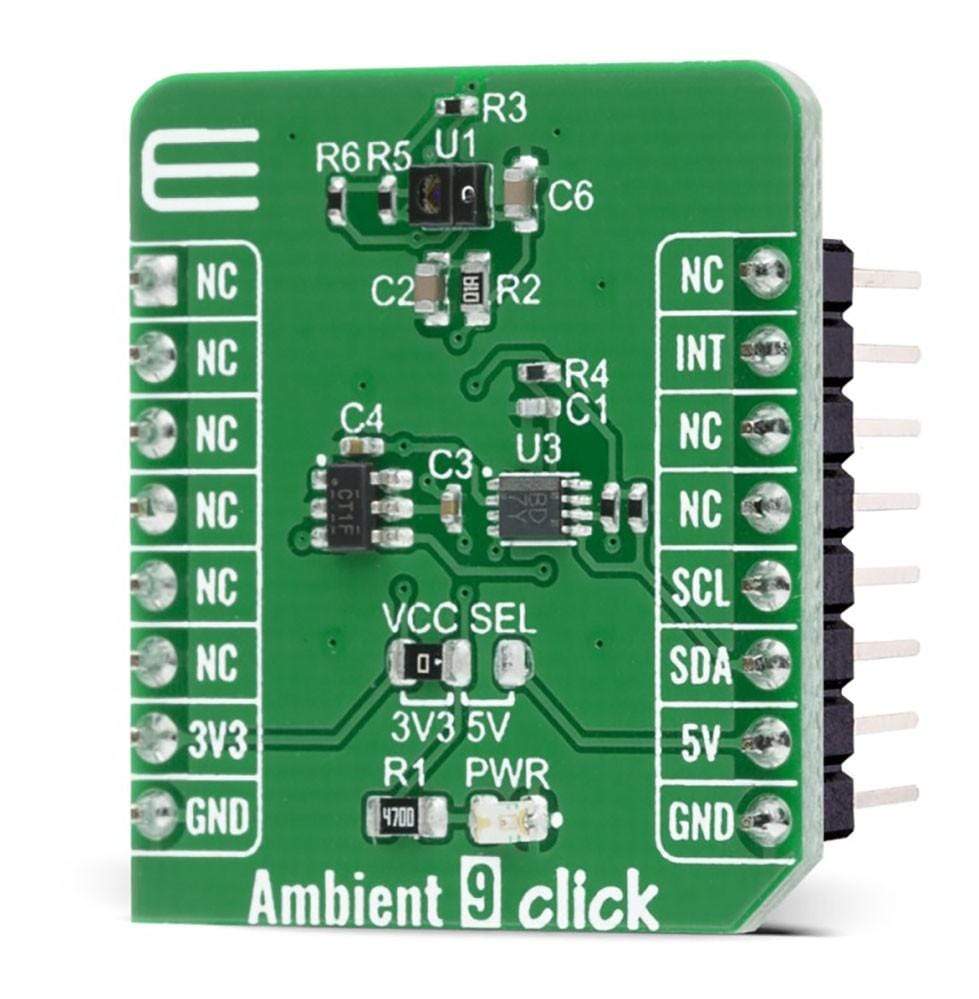
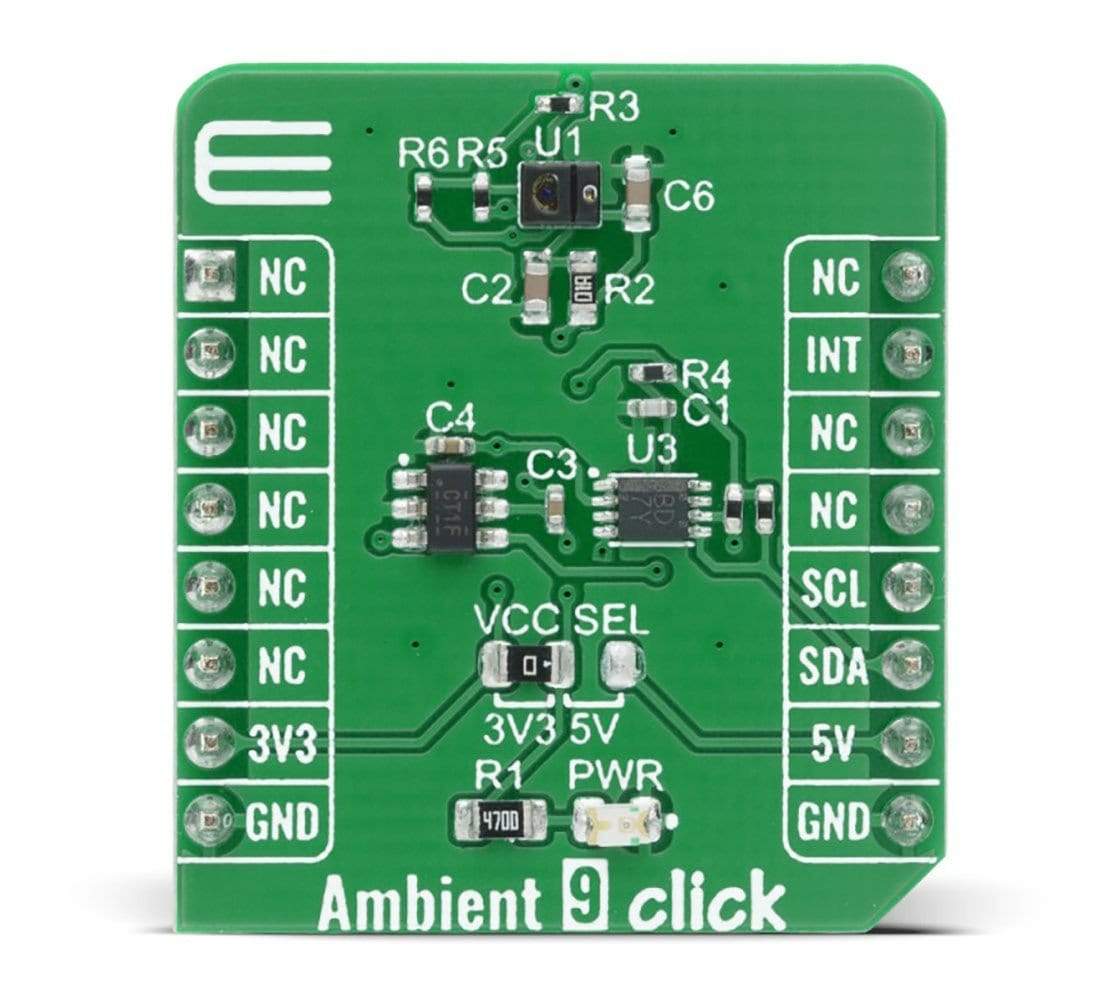
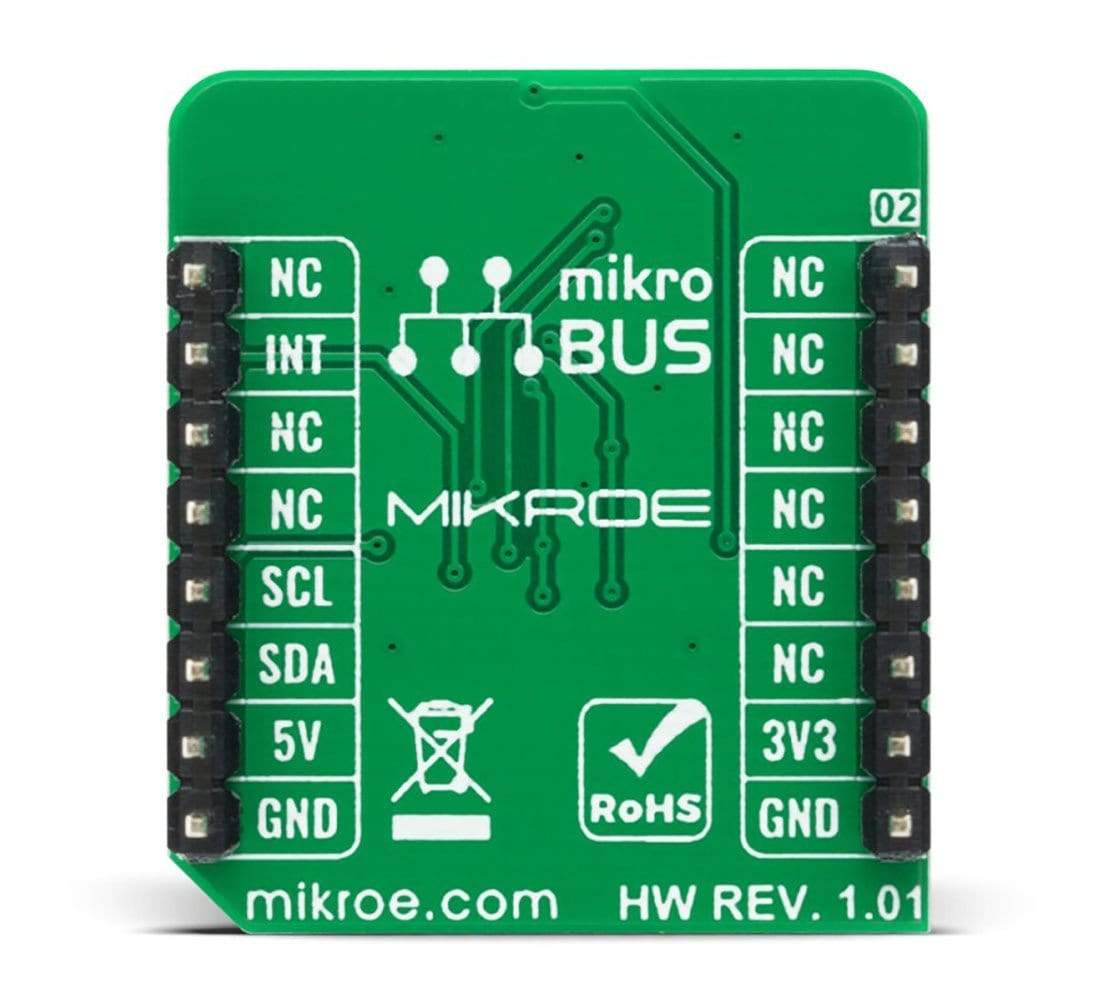
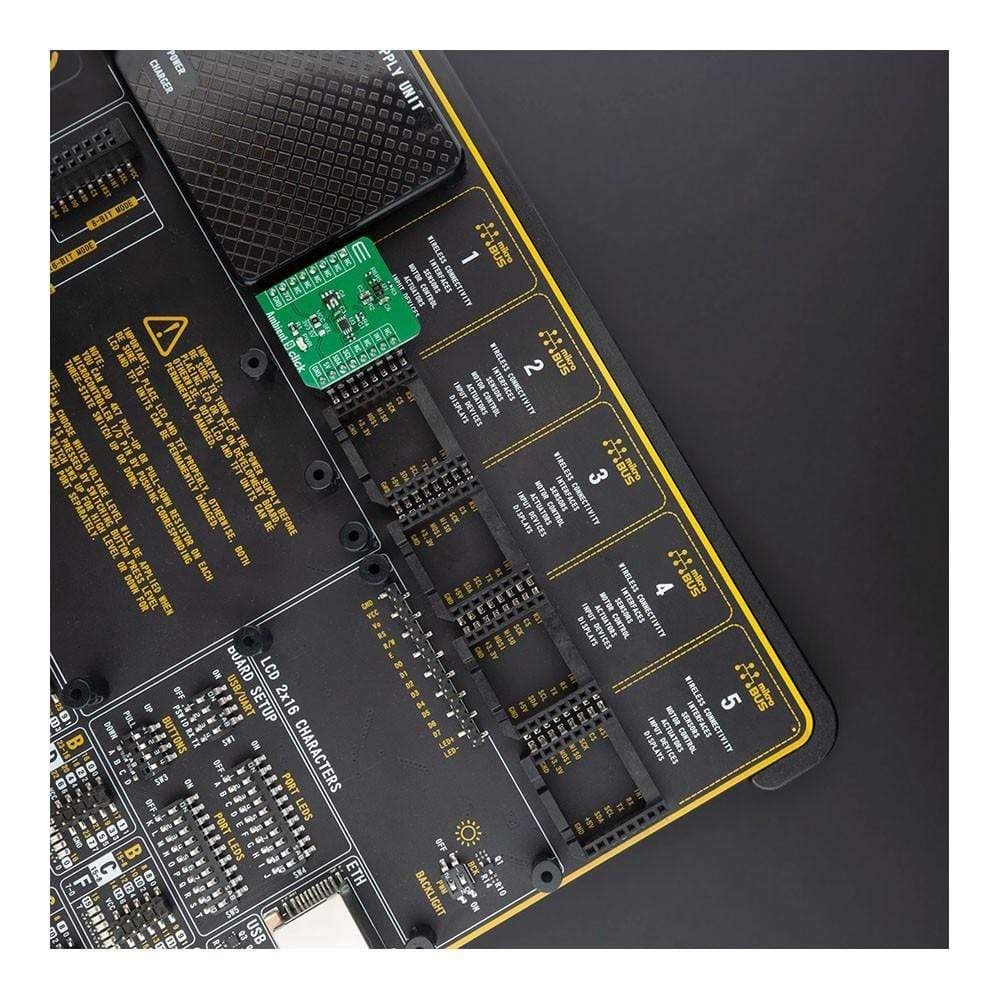
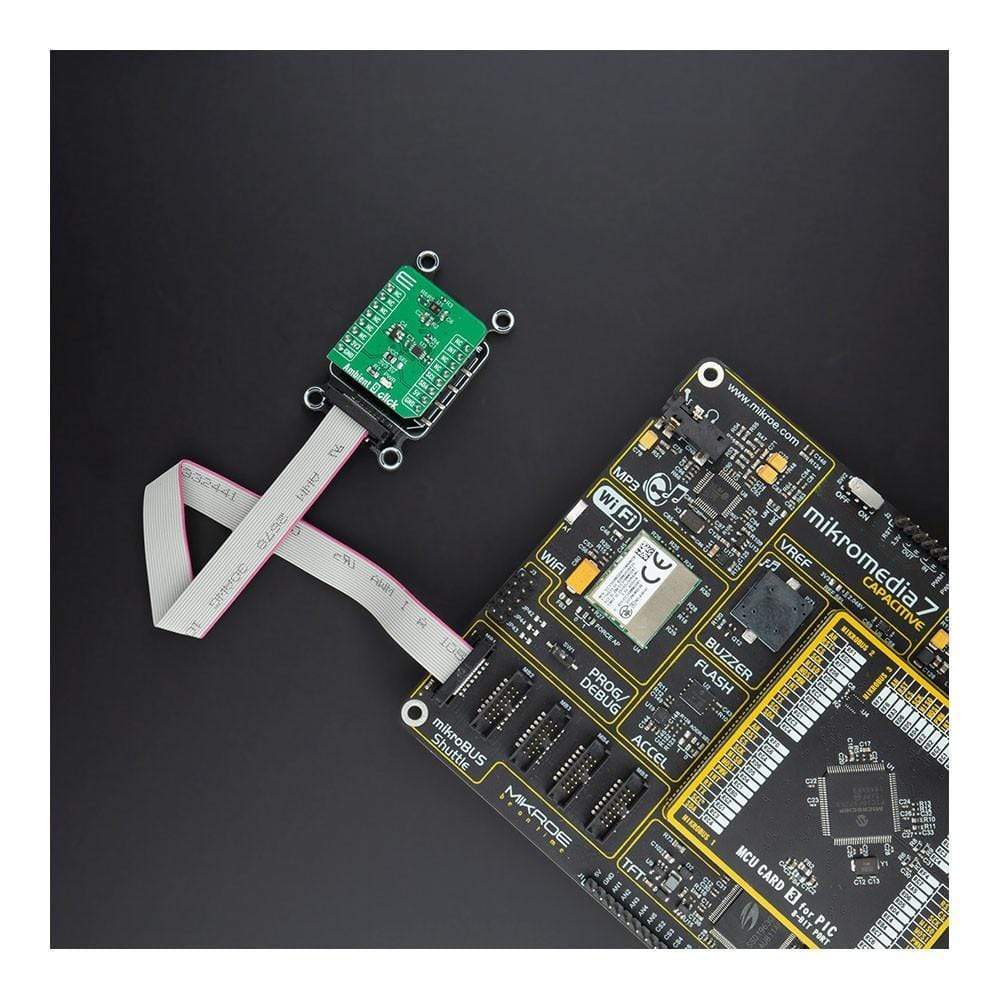
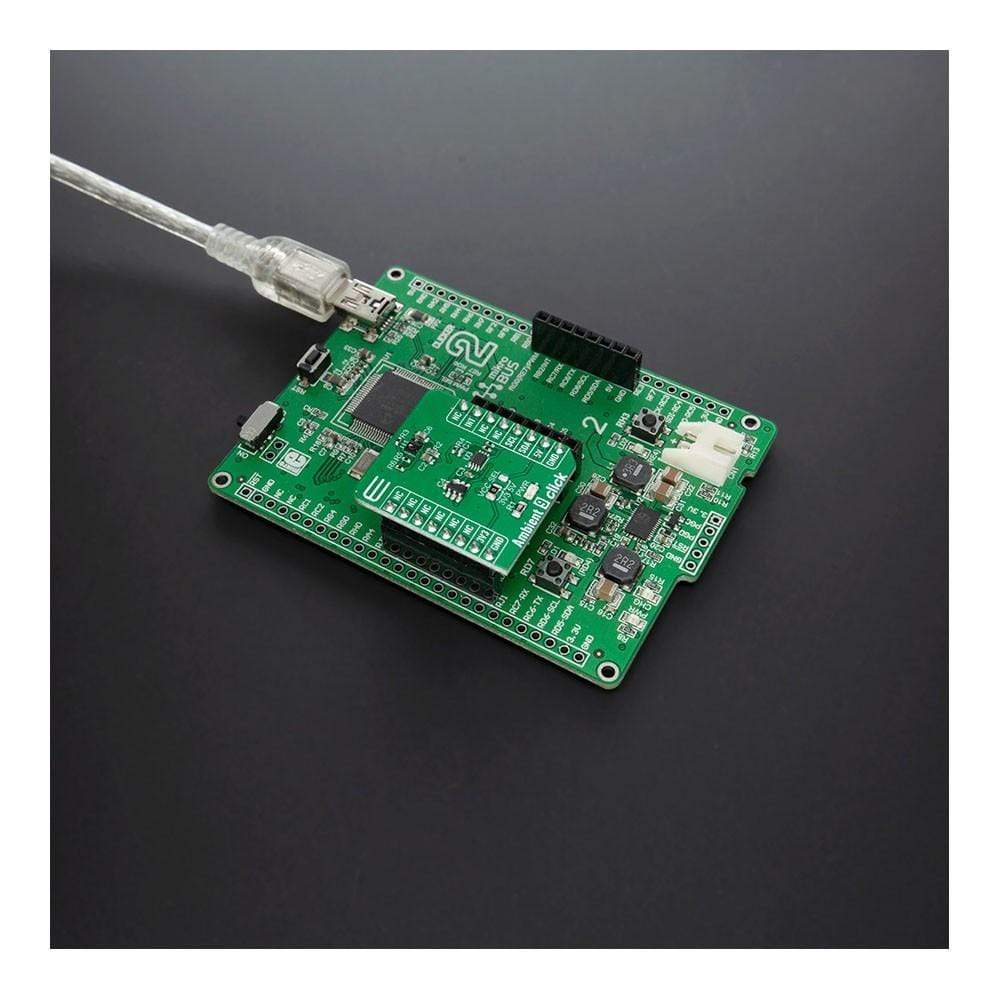
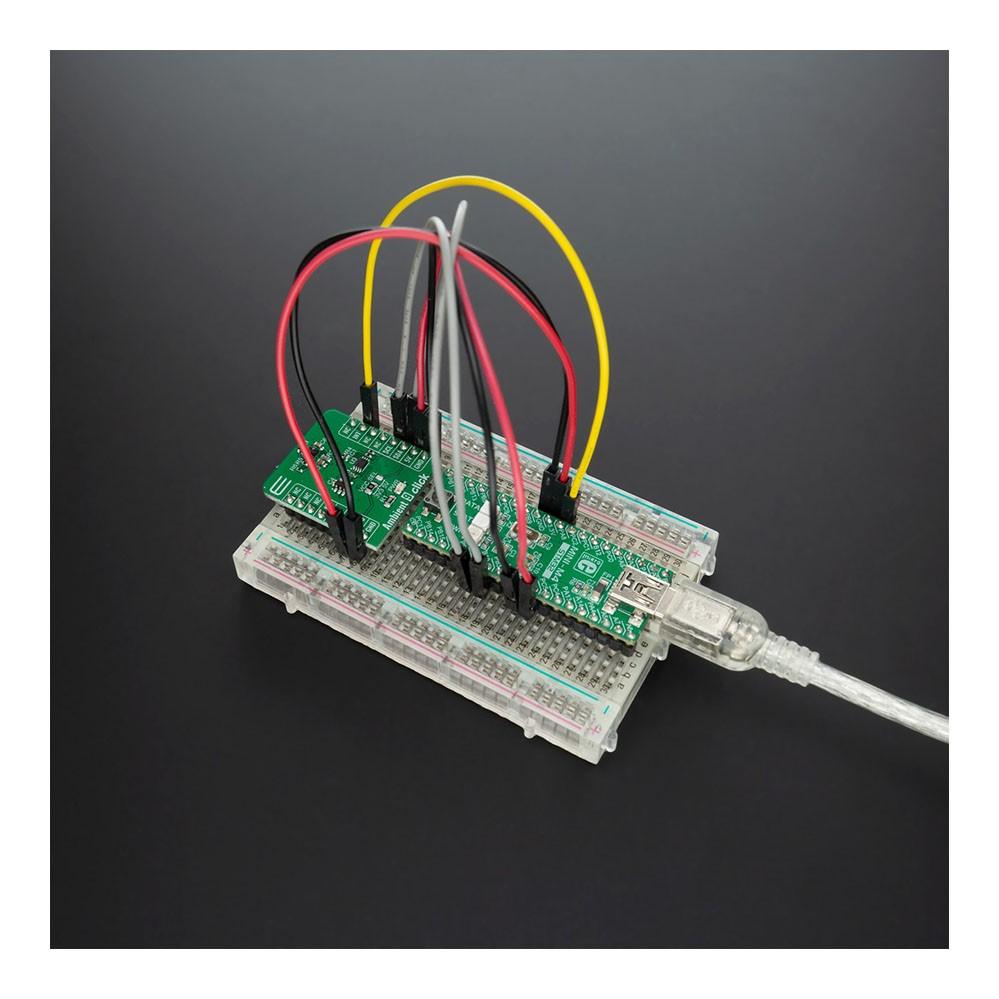
Overview
The Ambient 9 Click Board™ is a compact add-on board that contains an integrated ambient light sensing and proximity detector with IR LED in an optical module. This board features the APDS-9160-003, digital ALS, and IR sensing, an IR LED, and a complete proximity sensing solution from Broadcom Limited, that is fit to be used under a small aperture of the device's window cover. It has a wide dynamic range, the proximity detection feature operates well from bright sunlight to dark rooms, and both the PS and ALS functions independently provides maximum flexibility in applications. The Ambient 9 Click Board™ is suitable for display management to extend battery life and provide optimum viewing in diverse lighting conditions.
The Ambient 9 Click Board™ is supported by a mikroSDK compliant library, which includes functions that simplify software development. This Click Board™ comes as a fully tested product, ready to be used on a system equipped with the mikroBUS™ socket.
Downloads
Das Ambient 9 Click Board™ ist eine kompakte Zusatzplatine, die eine integrierte Umgebungslichterkennung und einen Näherungsdetektor mit IR-LED in einem optischen Modul enthält. Diese Platine verfügt über den APDS-9160-003, digitale ALS- und IR-Erkennung, eine IR-LED und eine vollständige Näherungserkennungslösung von Broadcom Limited, die für den Einsatz unter einer kleinen Öffnung der Fensterabdeckung des Geräts geeignet ist. Sie verfügt über einen großen Dynamikbereich, die Näherungserkennungsfunktion funktioniert gut von hellem Sonnenlicht bis hin zu dunklen Räumen, und sowohl die PS- als auch die ALS-Funktion bieten unabhängig voneinander maximale Flexibilität bei Anwendungen. Das Ambient 9 Click Board™ ist geeignet zur Anzeigeverwaltung, um die Akkulaufzeit zu verlängern und eine optimale Anzeige bei unterschiedlichen Lichtverhältnissen zu gewährleisten.
Das Ambient 9 Click Board™ wird durch eine mikroSDK-kompatible Bibliothek unterstützt, die Funktionen enthält, die die Softwareentwicklung vereinfachen. Dieses Click Board™ wird als vollständig getestetes Produkt geliefert und ist bereit für den Einsatz auf einem System, das mit der mikroBUS™-Buchse ausgestattet ist.
| General Information | |
|---|---|
Part Number (SKU) |
MIKROE-4197
|
Manufacturer |
|
| Physical and Mechanical | |
Weight |
0.018 kg
|
| Other | |
Country of Origin |
|
HS Code Customs Tariff code
|
|
EAN |
8606027380303
|
Warranty |
|
Frequently Asked Questions
Have a Question?
Be the first to ask a question about this.







